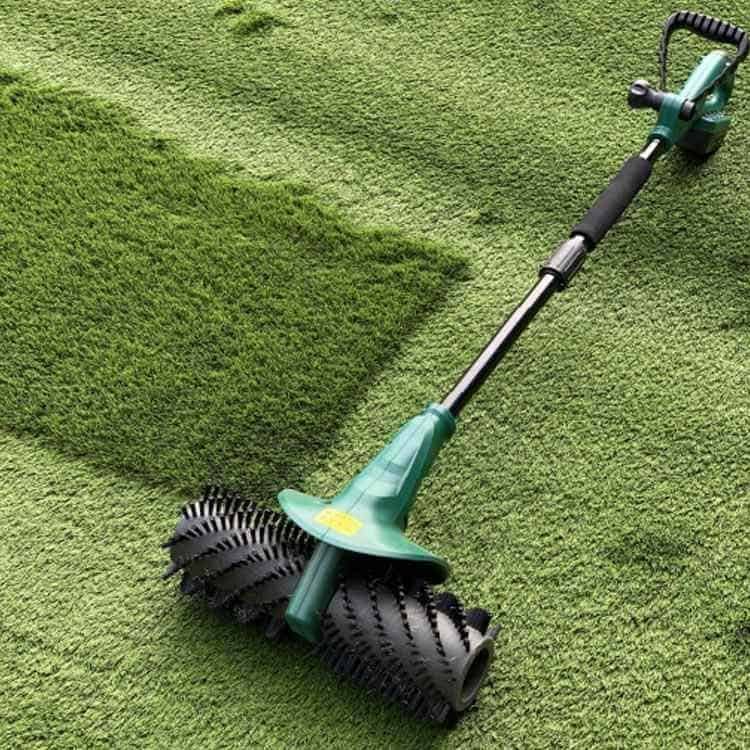Regularly maintaining your artificial grass is crucial for ensuring its longevity. In this article, we will provide several suggestions for effectively preserving your turf’s quality. These recommendations include using suitable tools to brush your lawn, managing weed growth, and preventing any potential heat-related harm. Let’s begin implementing these practices to keep your synthetic turf in excellent condition!
1. Groom Your Lawn and Remove Debris
In order to keep your artificial turf looking good, it’s crucial to brush it regularly. This process removes debris and dirt that may accumulate on the surface of the grass. Additionally, brushing prevents the formation of traffic patterns by ensuring that the blades of grass stand upright. It also redistributes the infill if it has moved. It’s best to brush your artificial grass at least once a month, and more often during periods of heavy use. This will help maintain its optimal appearance.
2. Get Rid of Reflective Objects Nearby
The majority of artificial grass is manufactured using plastic materials, which means that nearby highly reflective surfaces capable of redirecting light onto the turf can result in melting. This occurrence is known as “localized heating”. Common causes of localized heating include Low-E windows, glass outdoor furniture, glass doors, vinyl or white fencing, and large metal objects like cars and BBQs. Additionally, plastic pool accessories left on the turf can also cause melting. Therefore, it’s essential to avoid leaving such materials on or near your artificial grass.
3. Rinse & Disinfect
To maintain the appearance of your artificial grass, it’s recommended to use a garden hose to gently spray the turf’s surface and remove any accumulated debris or dirt. However, you should avoid using harsh chemicals or abrasive cleaning products as these can damage the grass blades. Furthermore, regular rinsing with an artificial grass disinfectant can decrease the chances of bacterial growth and odor buildup. It’s important to note that disinfectant should be used according to the manufacturer’s instructions.
4. Prevent Weeds & Critters
Being proactive during the installation of artificial grass can help prevent weeds from taking root. Some recommended methods include using a weed barrier, applying a pre-emergent product before laying the subbase, and ensuring all existing weeds and their root systems are cleared.
However, if weeds do manage to grow, Tynice Turf suggests using safe topical solutions with a pH balance between five and nine, as required for their product warranty. These solutions can be used to control the growth of weeds.It’s important to note that even with proactive measures, there’s still a possibility of weed growth under certain conditions or if your yard is prone to weeds. Regular maintenance and monitoring can help address any potential weed growth to keep your artificial grass looking its best.
5. Perform periodic inspections
Performing periodic inspections of your artificial grass can help you catch any issues early and ensure it stays in top condition. During these inspections, check for signs of wear and tear, such as fraying edges or discoloration. Also, look for any debris or dirt that may have accumulated on the surface and remove it using a gentle spray from a garden hose.
Inspect the seams and edges of the turf to ensure they are secure and not coming loose. If you notice any areas that need repair, such as loose seams or damaged spots, address them promptly to prevent further damage.Additionally, keep an eye out for any signs of weed growth. Even with proactive measures, weeds can sometimes find a way to grow through the turf. If you spot any weeds, remove them carefully to prevent them from spreading.
By performing regular inspections and addressing any issues promptly, you can help ensure that your artificial grass continues to look great for years to come.

